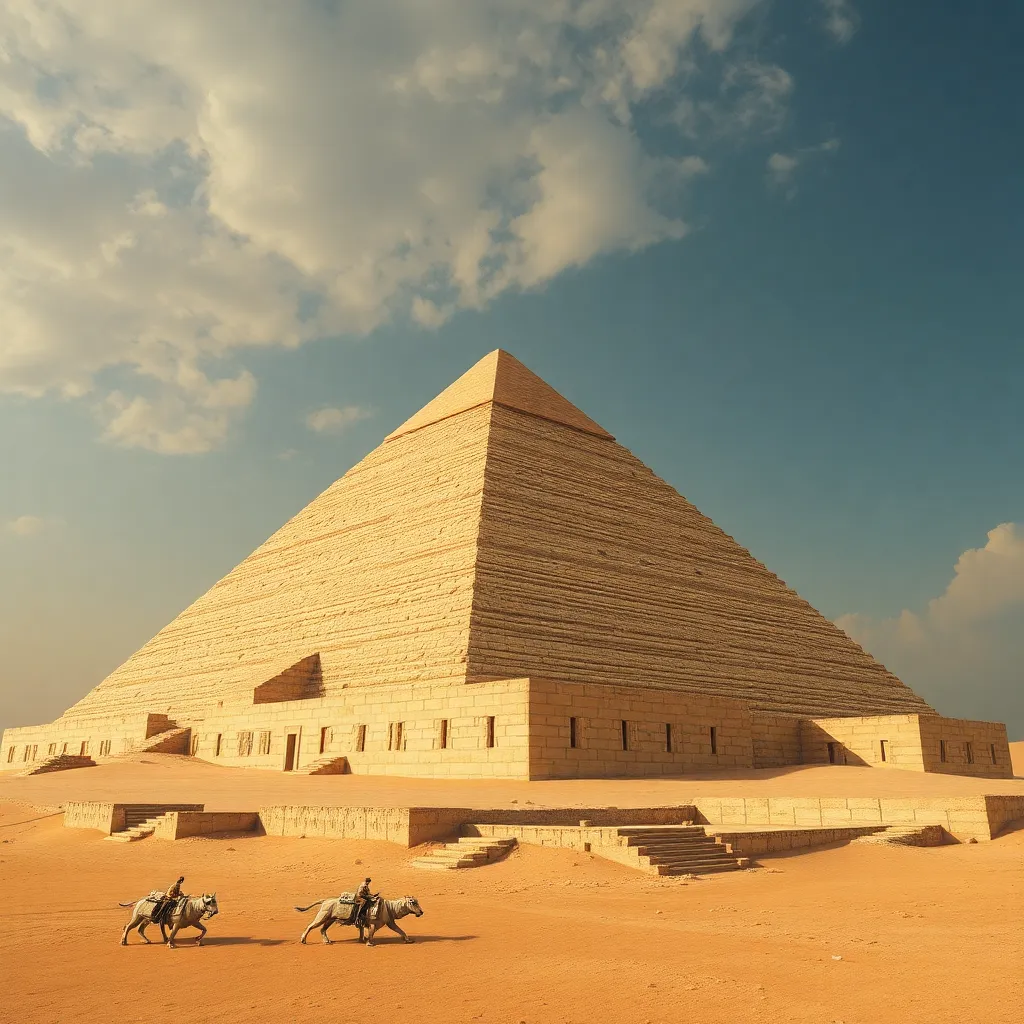The Pyramid of Sneferu: The Architect of Change
I. Introduction
In the annals of ancient Egyptian history, few figures are as significant as Pharaoh Sneferu, the first ruler of the Fourth Dynasty. His reign marked a pivotal era of architectural innovation and monumental construction, setting the stage for the grand pyramids that would follow. This article delves into the Pyramid of Sneferu, examining its architectural innovations and the lasting impact it had on Egyptian architecture.
II. Historical Context of Sneferu’s Reign
The Fourth Dynasty of Egypt, often regarded as the golden age of pyramid construction, witnessed unprecedented advances in architecture and engineering. Sneferu ascended the throne during a time of political consolidation and social change, facing challenges that would shape his legacy.
- Political Landscape: Sneferu inherited a unified Egypt but needed to solidify his power amidst potential rival factions.
- Social Dynamics: The period saw a growing centralization of authority, with the pharaoh as the focal point of governance.
Monumental architecture, particularly the construction of pyramids, played a crucial role in reinforcing royal power. These structures served not only as tombs but as symbols of divine kingship, demonstrating the pharaoh’s connection to the gods.
III. The Evolution of Pyramid Design
The architectural landscape of ancient Egypt was not static; it evolved significantly over time. The transition from step pyramids to true pyramids was a critical development in this evolution.
- Predecessors: Sneferu’s predecessors, such as Djoser, built step pyramids, which were the first monumental stone structures in history.
- Innovations: Sneferu introduced new building techniques, including improved stone-cutting and transportation methods that allowed for more ambitious designs.
This era of experimentation laid the groundwork for the iconic pyramids of Giza that would follow, showcasing the ingenuity of Egyptian architects and laborers.
IV. The Bent Pyramid: A Turning Point
The Bent Pyramid, located at Dahshur, is one of Sneferu’s most famous constructions and represents a significant turning point in pyramid design.
- Structural Features: This pyramid is unique due to its bent angle, which transitions from a steep to a shallow incline, creating a distinctive shape.
- Theories of Design: Various theories suggest that the change in angle was either a response to structural challenges or a deliberate aesthetic choice.
Sneferu’s experimentation with the Bent Pyramid reflects his willingness to innovate, though it also showcases the learning curve associated with monumental construction. The lessons learned here would be invaluable for future projects.
V. The Red Pyramid: The First True Pyramid
Following the Bent Pyramid, Sneferu constructed the Red Pyramid, which is often considered the first true pyramid due to its perfect geometric shape and smooth sides.
- Construction Overview: Built with limestone and granite, the Red Pyramid measures approximately 105 meters in height and 220 meters at the base.
- Architectural Advancements: The Red Pyramid showcased advancements in structural integrity and aesthetic appeal, featuring a consistent angle of 43 degrees.
This pyramid not only marked a culmination of Sneferu’s architectural experiments but also set a standard for the pyramids that followed, establishing a template for future generations.
VI. The Cultural and Religious Implications
Pyramids held immense cultural and religious significance in ancient Egypt, serving as tombs for pharaohs and as symbols of their divine authority.
- Funerary Practices: Pyramids were integral to the funerary rites of the pharaohs, designed to facilitate their journey to the afterlife.
- Divine Kingship: Sneferu’s pyramids reinforced the idea of the pharaoh as a god on earth, whose eternal resting place was a direct link to the divine.
The architectural changes introduced during Sneferu’s reign had profound implications for Egyptian society and culture, influencing religious practices and societal norms.
VII. Legacy of Sneferu and His Pyramids
Pharaoh Sneferu’s contributions to architecture were monumental, influencing not only his immediate successors but also the broader trajectory of Egyptian monumental construction.
- Influence on Successors: The architectural innovations introduced by Sneferu paved the way for the grand pyramids of his son Khufu and grandson Khafre.
- Enduring Significance: The techniques developed during Sneferu’s reign continued to be employed, showcasing the lasting impact of his vision.
Archaeological findings at the sites of Sneferu’s pyramids have provided modern interpretations of ancient engineering practices, revealing the complexities involved in pyramid construction.
VIII. Conclusion
In summary, Pharaoh Sneferu’s contributions to Egyptian architecture were transformative, marking a critical phase in the evolution of pyramid design. The Pyramid of Sneferu not only advanced architectural techniques but also solidified the cultural and religious significance of these monumental structures.
The impact of Sneferu’s innovations continues to resonate, influencing generations of architects and historians alike. His legacy serves as a testament to the importance of innovation in historical architecture, reminding us that the pursuit of greatness is often built on the lessons of the past.




